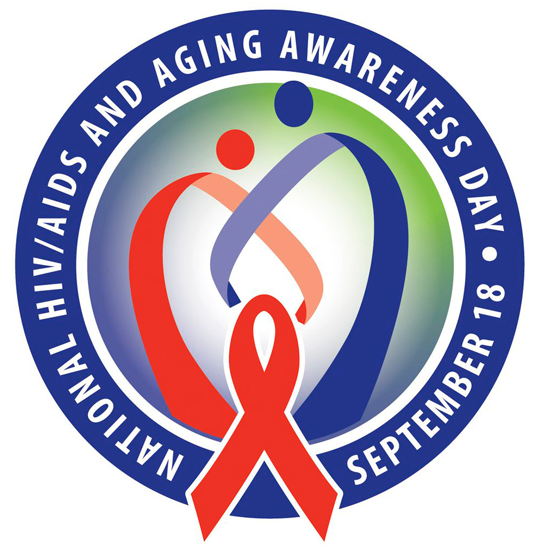Communicating about HIV and Aging

According to the CDC, nearly half of all people in the United States living with HIV are aged 50 and older.
This fact reminds us that it is important to talk about HIV and aging. Looking ahead to the September 18th observance of National HIV/AIDS and Aging Awareness Day, today’s blog features resources for communicating about prevention and aging with HIV.
Start with HIV.gov
The HIV.gov Events Section dedicates a resources page to National HIV/AIDS and Aging Awareness Day (NHAAD). We recently added fact sheets and other resources and will continue to add community and federal resources. You can find the logo and details on community leadership and events.
We also encourage you to include information about the Ending the HIV Epidemic: A Plan for America and ask your audiences to sign up for the initiative-specific email newsletter.
Go Social
This year is the 12th observance of NHAAD. The hashtag in play is #HIVandAging. You may also see #NHAAD being used. Here are a few handles that talk about HIV, HIV testing and care, and aging:
- Facebook: @HIVgovExit Disclaimer, @cdchivExit Disclaimer and @starttalkinghivExit Disclaimer
- Twitter: @HIVgovExit Disclaimer, @DrMerminCDCExit Disclaimer and @CDC_HIV/AIDSExit Disclaimer
- Instagram: @hivgovExit Disclaimer, @starttalkinhivExit Disclaimer
Share Basic Facts
It’s important for everyone, regardless of age, to learn the basic facts about HIV. The HIV Basics section within the HIV.gov site provides essential and shareable content about HIV prevention, testing, care initiation, retention in HIV care, and more.
This Awareness Day is a chance to share the news that people living with HIV are living long, healthy lives. The observance is also a chance to explain what to expect if you take an HIV test and to increase understanding of the implications of aging and having HIV for a long time.
We encourage you to use and share the HIV Testing and Care Services Locator with the older adults in your communities. The inclusion of PrEP services in the location-based searches in this tool can support efforts to talk with older adults about how to stay negative.
For information on where we’ve been in our collective response to HIV or to bring to light the concerns of those who have lived through the many years of this epidemic, the HIV.gov timeline of HIV and AIDS may be helpful.
Stay with HIV.gov
After National HIV/AIDS and Aging Awareness Day, we’ll continue to provide awareness day resources and content for upcoming HIV Awareness Days in 2019.